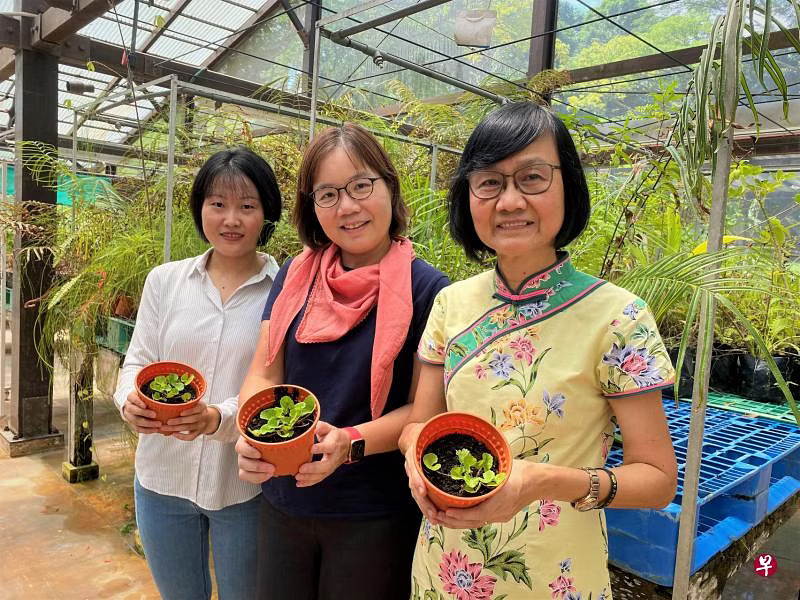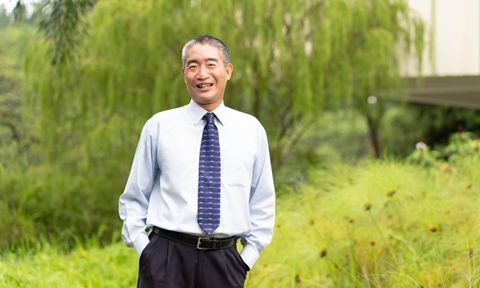南大与公园局研究团队发现 12种热带植物可为重金属土壤排毒
Reports noted that plants readily found in Singapore were now being tapped to clean the soil of toxic contaminants, with 12 tropical species identified. Since the start of April, a pilot to remove heavy metals and metalloids using more than a hundred tropical plants had begun at industrial land in the north of Singapore. The three-month pilot used the findings from an islandwide study published in February by researchers from NTU and NParks. The study identified 12 plant species that could effectively extract metals and metalloids potentially toxic to humans. Although the plant-based method had been deployed at some wetlands in the country, the study paved the way for a sustainable approach of using a palette of naturalised or native vegetation that had minimal impact on ecosystems, according to Professor Lam Yeng Ming, chair of NTU's School of Materials Science and Engineering. She noted that this was particularly relevant for a small nation like Singapore, where industrialised land might be repurposed to support new development plans. Associate Professor Tan Swee Ngin from the Academic Group of Natural Sciences and Science Education at NTU's National Institute of Education said that during the study, such plots of land were found to contain higher levels of heavy metals and metalloids, which could affect the environment as well as the health of flora and fauna.

南洋理工大学材料科学与工程学院博士生王亚敏 (左起) ,材料科学与工程学院院长蓝燕明博士和浙加坡国立育学院副教授陈瑞银展示可从到污染土地中吸收乌的积雪草。 (南洋理工大学提供)
南洋理工大学材料科学与工程学院院长蓝燕明博士说,新加坡国土面积小,往往要重新规划土地来推行新的发展计划。因此,必须通过绿色可持续的方法来补救受污染的土地。
孙靖斐 报道
jfseng@sph.com.sg
本地常见的12种热带植物可以帮助重金属污染的土地“排毒”,有助于减少对自然环境和生态系统的影响。
由南洋理工大学和国家公园局组成的研究团队在北部工业区种植牛草、积雪草和蜈蚣草等植物,以测试植物修复法在本地的可行性,三个月后证实这些植物可以吸收并贮存土地中的重金属和准金属污染物。
土壤中本来就昔含锁、砷、狠和箱等重金属物质,加上交通工具和建筑工程排放的气体,以及杀虫剂, 油漆 ,电他,工业庆料等污染产,长久以往可能导致土地累积大量重金属物质,对人类或动物造成危害。
为了消除土壤中的重金属物质,过去普遍运用洗土 (soil washing) 和酸浸洗 (acid leaching) 等方法,不但成本高昂,必的高刺激性化学物质也可能对环境产生新的破坏。此外,运用重机械来挖握和运输泥土可能会影响泥土的性康和肥力,也提高重金属汇圳的风险。
因此,研究团队着望以植物修复法 (phytoremediation) 来取而代之,也用上本地常见而且容易种植的热带植物,碱少对自然环境和生态系统的影响。运用植物来收集重金属物质,也可以防止金属泄露和侵蚀,降低污染物扩散的风险 。
新加坡国立教育学院自然科学与科学教育学部副教授陈瑞银说,实验结果显示有些土地的重金属和准金属成分较高,这可能破坏自然环境和动植物的健康。因此,实行的植物修复法起了预防作用, 尽量减少金属污染。
植物在吸收饱和后就会从土地上移除,贮存其中的重金属和准全属物质经过提炼,也可重新作为工业用途。
南洋理工大学材料科学与工程学院长蓝燕明博士说,新加坡国土面积小,往往要重新规划土地来推行新的发展计划。因此,必须通过绿色可持续的方法来补救受污染的土地。
蓝燕明说: “比起其他方法,植物修复法相对成本低廉,可长期使用,也维持了自然环境的美感。”
南大材料科学与工程学院博士生王亚敏也说; “这项实验主要采用常见而且容易生长的野生植物,有些还是就地从南大社区芳草园中采集的。”
相对其他方法,植物修复法的效果更长远缓慢,而不同的植物可吸纳的物质也不同。因此这项计划也需要有效答理,包括重复种植来维持够的生长期,才能最大限度地碱少重金属污染。
这项研究成果已于2月发表在 (环境污染) 科学期刊。接下来,团队也会尝试对植物进行政良培育,例如诡加无机物来加速檀煌生长以及提升吸收效能。
Read the original article on Lianhe Zaobao.
Source: Lianhe Zaobao © Singapore Press Holdings Limited. Permission required for reproduction.





.tmb-listing.jpg?Culture=en&sfvrsn=13b00373_1)
